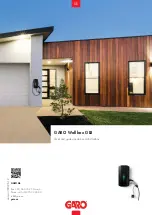
6-16
Driving your vehicle
NOTICE
To prevent unnecessary wear or damage
to the clutch:
• Do not rest your foot on the clutch
pedal while driving.
• Do not hold the vehicle with the
clutch on an incline, while waiting for
the traffic light, etc.
• Always depress the clutch pedal
down fully to prevent noise or dam-
age.
• Do not start with the 2nd (second)
gear engaged except when you start
on a slippery road.
• Depress the clutch pedal all the way
and be careful not to depress the
pedal again before returning to the
upright position after you release the
pedal. If you depress the pedal be-
fore returning to the original position
repeatedly, it may cause the clutch
system failure.
• Do not overload the vehicle. Starting
or driving a vehicle in this situation
generates too much frictional heat to
the clutch disk which might cause
damage to the clutch cover and disk.
• When starting the vehicle or driving
backwards, releasing the clutch ped-
al too soon after shifting the lever
might turn off the engine and lead to
an accident.
Downshifting
Downshift when you must slow down in
heavy traffic or drive up a steep hill to pre-
vent engine load.
Also, downshifting reduces the chance of
stalling and can accelerate when you
need to increase your speed again.
When the vehicle is going downhill,
downshifting helps maintain safe speed
by providing brake power from the engine
and enables less wear on the brakes.
NOTICE
To prevent damage to the engine, clutch
and transmission:
• When downshifting from 5th gear to
4th gear, be careful not to inadver-
tently push the shift lever sideways
engaging the 2nd gear. A drastic
downshift may cause the engine
speed to increase to the point the ta-
chometer will enter the red-zone.
• Do not downshift more than two gear
at a time or downshift the gear when
the engine is running at high speed
(5,000 RPM or higher). Such a down-
shifting may damage the engine,
clutch and the transmission.
















































